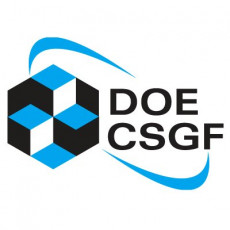Berkeley Lab Hosts Record 11 CSGF Fellows in 2021
September 14, 2021
Contact: cscomms@lbl.gov
In 2021, Berkeley Lab will welcome a record 11 Department of Energy (DOE) Computational Science Graduate Fellows (CSGF). Drawing from diverse scientific and engineering disciplines, the fellows share a common interest in using computing in their research. Each of these talented students is pursuing a doctoral degree in a field that uses high-performance computing (HPC) to solve complex science and engineering problems.
As part of the fellowship, each student must complete a three-month practicum (research experience) at one of the 20 DOE National Laboratories of their choice, which gives fellows an idea of how a national lab research career differs from one in academia or industry. This experience is designed to strengthen ties between the national academic community and DOE laboratories so that the fellowship’s multidisciplinary nature builds the national scientific community.
“Eleven is the most CSGF fellows that we’ve had at Berkeley Lab in a calendar year,” said Dan Martin, a CSGF alumnus and lead of Berkeley Lab’s Applied Numerical Algorithms Group. “The fact that so many fellows want to do their practicum at Berkeley Lab during a global pandemic when some cannot even come on-site demonstrates the breadth and quality of our research and staff.”
Here are some of the fellows doing their practicums at Berkeley Lab this year:
Kaley Brauer, Massachusetts Institute of Technology (MIT)

Kaley Brauer
Kaley Brauer is a computational astrophysicist studying the formation of the Milky Way galaxy and the origins of heavy cosmic elements. She is working toward a Ph.D. in Physics from MIT and the Kavli Institute for Astrophysics and Space Research.
Brauer will do her practicum on-site with Berkeley Lab Physicist Dan Kasen, whose work focuses on theoretical and computational astrophysics with an emphasis on supernovae, neutron star mergers, and other energetic transients.
“At Berkeley Lab, I hope to gain familiarity with a new hydrodynamic simulation code and use those skills to develop a simulation that studies, in high resolution, how metals that form during a neutron star merger mix into the gas around it,” said Brauer. “We know that gold and other heavy chemical elements form in neutron-dense environments such as in the ejecta of neutron mergers. We don’t know, however, exactly how the metals mix into the gas of the galaxy. Understanding the dissemination of heavy elements is vital for understanding star and planet formation, so we hope to shed light on this question.”
In her free time, she looks forward to spending time outdoors in the Bay Area. For fun, Brauer likes to hike, bike, draw, and ride mopeds.
Benjamin Sepanski, the University of Texas at Austin

Benjamin Sepanski
Benjamin Sepanski is a computer scientist using program synthesis and verification problems to solve HPC issues in the scientific domains. He is currently pursuing a Ph.D. in computer science at the University of Texas at Austin.
Sepanski is doing his practicum remotely from Austin with Berkeley Lab scientist Sam Williams. His research interests include HPC, performance modeling, auto-tuning, computer architecture, and hardware/software co-design.
“As an undergrad at Baylor University, I worked on the Firedrake project, a domain-specific language for finite element computations. I was fascinated by the level of complexity and number of intermediate layers required to provide a usable and performant DSL and I decided I wanted to make more tools like this for the scientific computing community,” said Sepanski. “Berkeley Lab has a tremendous reputation, and I was very interested in a lot of the research coming out of the Computational Research Division. With my practicum, I hope to get more experience in understanding HPC modeling techniques to better understand the issues of writing performance code by hand, before tackling code generation, meet other Berkeley Lab researchers, and learn what working at a national lab is like.”
In his spare time, Sepanski likes to listen to podcasts and audiobooks, run, bike, play board games, and disc golf.
Lindsey Byrne, Northwestern University
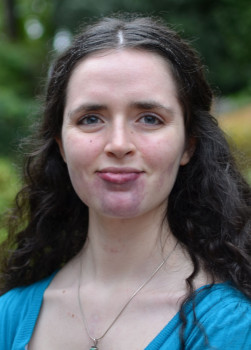
Lindsey Byrne
Lindsey Byrne is a computational astrophysicist studying active galactic nucleus (AGN) feedback and galaxy formation. AGNs are bright, energetic compact regions at the center of many galaxies that are likely powered by supermassive black holes. Byrne’s work uses computer simulations to study how the energy produced by AGNs impacts the formation and evolution of its host galaxy. She is pursuing a Ph.D. in astronomy at Northwestern University.
For her practicum, Byrne is working partly remote and on-site with Berkeley Lab scientist Zarija Lukić, whose research focuses on the formation and evolution of the cosmos, and using sky surveys to determine cosmological parameters. An essential part of Lukić’s research is also finding computational algorithms for modeling physical systems, as well as algorithms for extracting scientific insights from those simulations.
“I chose to do my practicum at Berkeley Lab because I found the research being done by the cosmology group to be very interesting, and I thought Berkeley would be a nice place to live for a few months,” said Byrne. “While I’m here, I hope to gain experience working with supercomputers at the National Energy Research Scientific Computing Center (NERSC), and more accurately model the evolution of the universe by including the effects of supermassive black holes in computer simulations.”
For fun, Byrne enjoys hiking and reading science fiction.
Ethan Epperly, California Institute of Technology
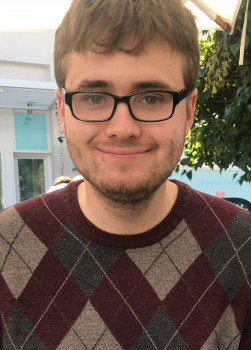
Ethan Epperly
Ethan Epperly’s research is focused on the design and analysis of novel algorithms to solve large-scale linear algebra problems, which have applications in materials science, continuum mechanics, and data and network science. He is currently working toward a Ph.D. in applied and computational mathematics at Caltech.
This past summer, Epperly worked with Berkeley Lab faculty scientist Lin Lin on quantum algorithms for eigenvalue problems that will be amenable to near-term quantum devices.
“I applied to the CSGF fellowship because it seemed like a perfect fit for my interests in using mathematical algorithms and large-scale computing to address scientific problems of national importance,” said Epperly. “Deciding where to do my practicum was a very difficult decision, I ultimately decided on Berkeley Lab because I wanted to stretch myself out of my comfort zone and work on something new to me: quantum computation. These algorithms have the potential to be really important because they could allow us to study certain chemical systems and materials exponentially faster than is possible on classical computers.”
In his limited free time, Epperly enjoys taking trips to the beach with his girlfriend Sierra and dog Hulk.
Madelyn Cain, Harvard University
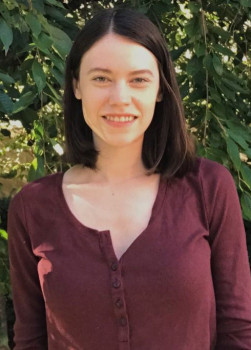
Madelyn Cain
Madelyn Cain’s research is focused on quantum computing, particularly the performance and implementation of quantum algorithms. She is pursuing a Ph.D. in physics at Harvard University.
“Many quantum algorithms are heuristic algorithms, meaning that there are few rigorous proofs about their performance,” she said. “To test the performance of a quantum algorithm without actually running it on a quantum computer, which may experience errors from noise, one typically has to perform large-scale numerical experiments. I applied to DOE’s CSGF program because it provides many resources for performing large-scale simulations.”
For her practicum, Cain’s advisor connected her to Berkeley Lab scientist Chao Yang, whose research aims to push simulations to run on ever-larger HPC systems to resolve open questions on the phenomenon of many-body localization. She’s currently working with Yang to implement code to time-evolve large quantum systems. By the end of her practicum experience, she hopes to be more comfortable with C++ and use that knowledge to run large-scale simulations on a supercomputer. She’d also like to make her codes GPU-compatible.
Cain enjoys spending her free time caring for a pineapple plant that she grew from the top of an old pineapple, as well as her vegetable and herb garden.
Christopher Kane, University of Arizona
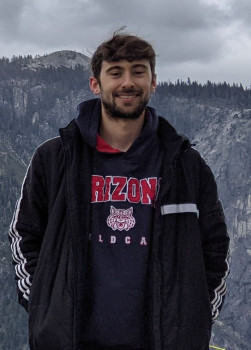
Christopher Kane
Christopher Kane’s research is focused on the lattice quantum chromodynamics (QCD) approach to solving the QCD theory of quarks and gluons. He is currently working toward a Ph.D. in physics at the University of Arizona.
Kane did his practicum remotely with Berkeley Lab Theory Group Lead Christian Bauer, whose research currently focuses on the field of quantum computing, to apply quantum computing to high energy physics and make noisy intermediate-scale quantum devices more reliable.
“I chose to do my practicum at Berkeley Lab because they have a quantum computing group focusing on developing algorithms to study high energy physics, and I thought it would be a good opportunity to see how a different computational tool can be applied to the physics that I am interested in,” said Kane. “I also wanted to learn about what life is like at a national lab as a researcher.”
In his free time, Kane likes to go for runs and catch up on his favorite shows.
Other CSGF fellows doing their practicum at Berkeley Lab this year are Margot Fitz Axen, Koby Hayashi, Laura Nichols, and Caitlin Whitter.
About Berkeley Lab
Founded in 1931 on the belief that the biggest scientific challenges are best addressed by teams, Lawrence Berkeley National Laboratory and its scientists have been recognized with 16 Nobel Prizes. Today, Berkeley Lab researchers develop sustainable energy and environmental solutions, create useful new materials, advance the frontiers of computing, and probe the mysteries of life, matter, and the universe. Scientists from around the world rely on the Lab’s facilities for their own discovery science. Berkeley Lab is a multiprogram national laboratory, managed by the University of California for the U.S. Department of Energy’s Office of Science.
DOE’s Office of Science is the single largest supporter of basic research in the physical sciences in the United States, and is working to address some of the most pressing challenges of our time. For more information, please visit energy.gov/science.









